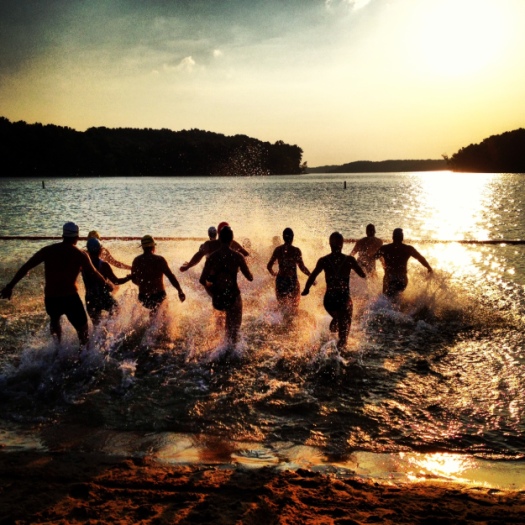Since I’m a new-ish triathlete, I’m still digging around to answer a million little questions and this article couldn’t have come a moment too soon. It’s a piece from the Ironman website by Sergio Borges and the first paragraph summed up the feeling I’ve been having for a couple weeks.
The pull buoy—that funny little piece of foam you stick between your legs when swimming—is a common point of contention among triathletes. Have you ever been told that swimming with one is addictive and bad for your swim? I’ve heard this far too often, from both athletes and swim coaches.
I was actually getting very concerned about this because swimming with the pull buoy has been much easier for the last month or two. On several occasions I’d swim without it just to make sure I was on pace and I was gassed after two or three laps. What gives?
This is what I think was happening:
Many athletes feel addicted to the buoy because of the better body position it creates, which leads to better glide in the water. When you glide, however, you reduce your stroke rate. A reduced stroke rate combined with a poorly honed body position won’t help you much in a race.
So, Wednesday night, after 1,000 meters WITH the buoy, I said enough is enough. I’m swimming the next 1,000 without it.
I was actually kinda pissed in my competitive sort of way and fought through the first few hundred meters, then suddenly, I found the groove I needed. I settled into a meditative state and suddenly, it was felt right again.
Fast forward to tonight after work.
I was excited to get back in the water and test this stroke. Sure enough, it felt great (other than the fact that I’m a little fatigued). Then, I decided to reverse the test and swim the back side WITH the buoy after 1,000 without. That’s when it got interesting.
With the better body position created by the buoys, the athlete can experience a proper catch not pulling water down first and also reducing many shoulder injuries.
Now, swimming with the buoy seemed harder! I concentrated on using the long stroke, the catch, and the pull. I could really feel it in my arms and my laps felt slower. It was actually a huge relief because I think it tells me, I was getting into a bad stroke while using it so much.
All of this is new and my opinion could easily change tomorrow, but for now I’m gonna believe that things are going as they should. We don’t use pull buoys at open water swims and I don’t seem to have a problem there, so like most stages of this training, I am simply gonna trust the process . . . and the coach. 